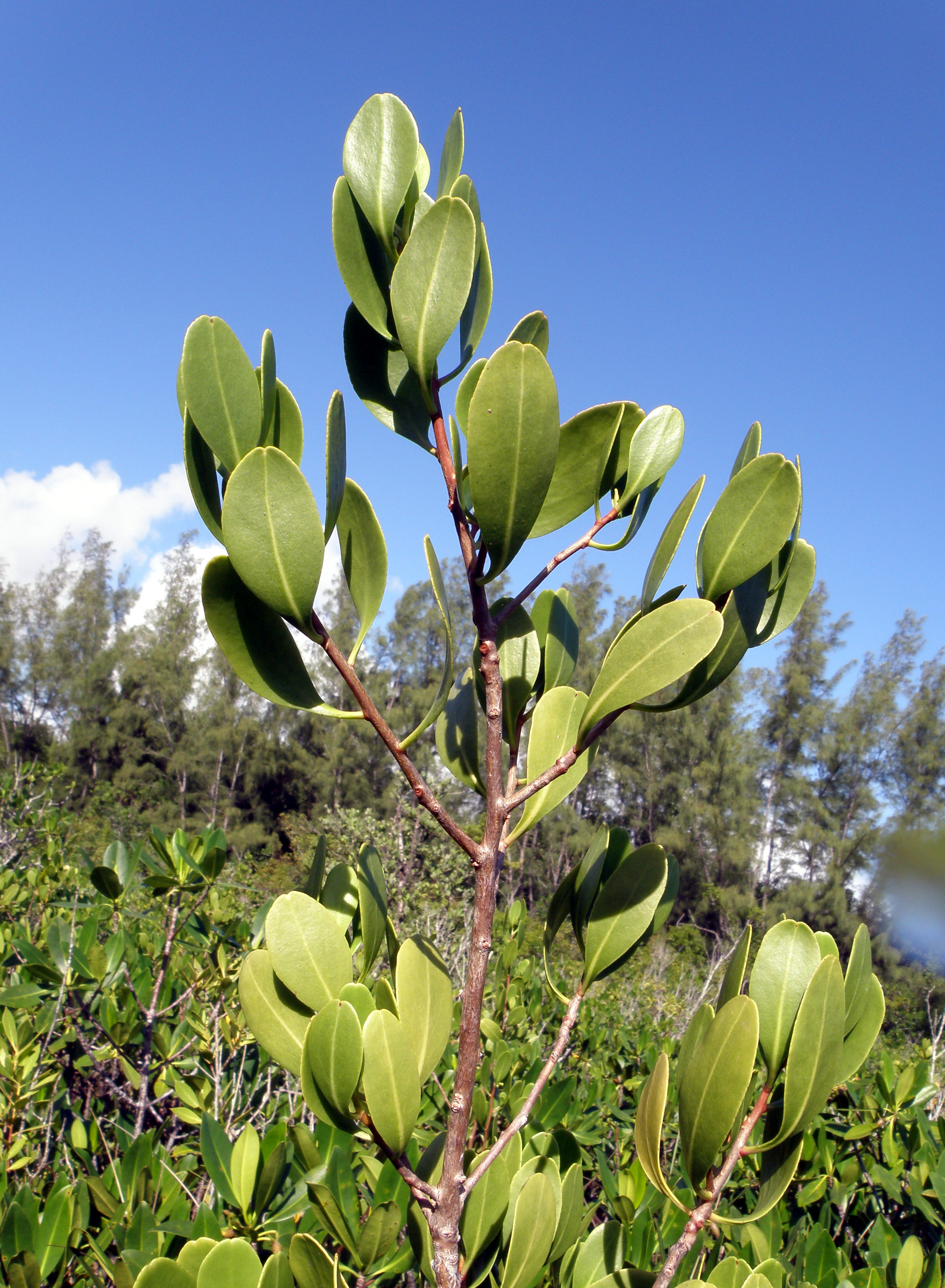Common Name: black mangrove
Family: Combretaceae
Common Synonyms: none
USDA Hardiness Zone: 11
Growth Habit: Tree
Origin: Asia, Australia
FISC Category: 1
FDACS Listed Noxious Weed: No
Introduction Date: 1966
IFAS Assessment:


Evergreen, erect and much-branched tree up to 10 m tall. Above-ground breathing roots normally absent but small looping lateral roots may develop in moist environments. Bark gray, fissured longitudinally in older trees. Leaves simple, alternate, 3-7 cm long and 2-3 cm wide, succulent, obovate in shape with an indent in the tip, leaf margin is slightly wavy. Inflorescence an axillary spike, 2 to 3 cm long. Flowers small, erect with green tube-like calyx, divided into five lobes at the tip, petals five, white, stamens ten, arranged in two whorls. Fruit vase-shaped, 1 to 2 cm long, yellowish green, glossy, corky. Seed single in each fruit, oblong ovoid.
Mangrove swamp
An Indo-West Pacific mangrove which has naturalized in the area of Fairchild Botanic Garden. EDRR efforts have been ongoing for this species for several years. Looks similar to our white mangrove (Laguncularia racemosa), which is opposite leaved. Has same common name as our native black mangrove (Avicennia germinans).

NA
Selvam, V. 2007. Trees and Shrubs of the Maldives. RAP Publication No. 2007/12. ftp://ftp.fao.org/docrep/fao/010/ai387e07.pdf. Accessed on December 12, 2013.
Possley, J. 2011. Update on Lumnitzera racemosa. Center for Tropical Plant Conservation. Fairchild Tropical Garden, Miami, Florida. http://www.evergladescisma.org/summit11/3_LumnitzUpdate2011.pdf. Accessed on December 12, 2013.